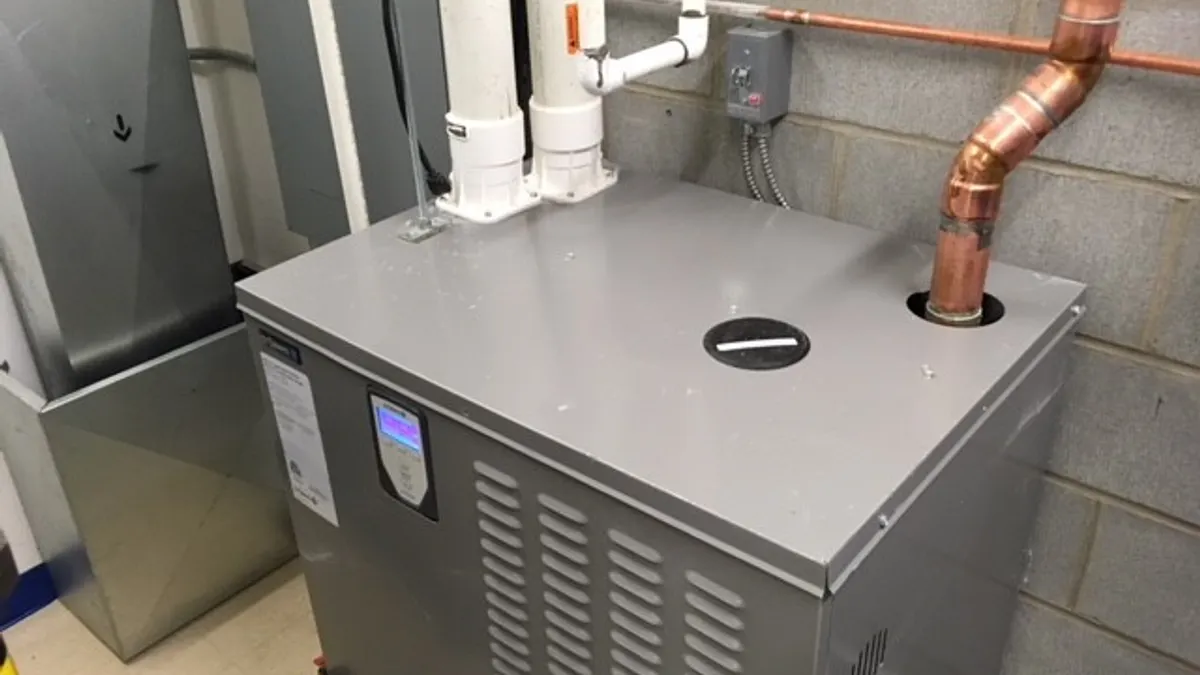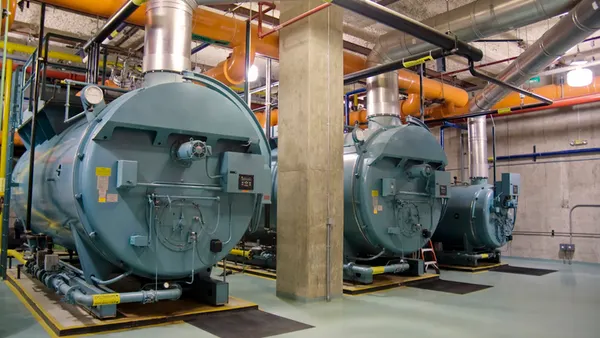Dive Brief:
- Engaging in an effective solicitation can help facilities managers attract high-quality vendors as the demand for skilled labor grows, despite a declining number of qualified experts in the workforce, according to a session at the International Facilities Management Association’s Facility Fusion conference Tuesday.
- A good scope of work paints the picture of what success looks like, describes what it takes to ensure project satisfaction, includes key objectives, expected outcomes and deliverables, and helps assure that all vendors propose a proper solution, according to Jake Smithwick, associate professor of civil engineering technology and construction management and graduate program director of construction and facilities engineering at the University of North Carolina-Charlotte, who led the session.
- “There [are] many fish in the sea. There’s many clients out there [and] organizations looking to buy services. If I’m an FM looking to hire somebody, we have to be seen as attractive as we possibly can,” Smithwick said. Attracting more high-performing vendors “starts with solicitation,” he noted. “Many times this document is the first impression that you’ll have with your vendor partners.”
Dive Insight:
Nonresidential construction spending and the total value of construction project starts have increased rapidly since the COVID-19 pandemic, outpacing growth in U.S. construction employment, according to Smithwick’s presentation. At the same time, an aging population, retirements and reduced labor force participation rates are driving a continued decline in the overall workforce, Smithwick said.
The impact of an aging population on organizations could be significant. The 2024 growth rate of people over the age of 65 will outpace the growth of younger generations through 2054, Smithwick noted in the presentation. The number of workforce participants aged 40 to 55 is also dropping, due to retirements and an ongoing shift in the population’s age distribution, Smithwick pointed out. “The core expertise of most of our organizations is in that age [group], and now there's fewer of them,” he said.
As a result, facilities managers are increasingly forced to address internal staffing challenges by engaging third-party vendors, contractors and service providers, said Smithwick. Operators not only “have to find experts [and] vendors that can provide the service,” to offset staffing challenges, but also need to attract them, he said.
To achieve this feat and secure contracts with quality vendors, a high-performing scope of work should include five key components, including an overview and a purpose, future state, itemized requirements, schedule and budget, and unique considerations, Smithwick said. Project overviews should preferably be just one to two sentences, or two paragraphs at most, and provide a high-level summary that is easily understandable and avoids technical language or jargon. Overviews should list primary business drivers and three to five quantifiable metrics of success, such as cost, time, quality and functionality, according to his presentation
The scope of work’s future state portion must describe each of the deliverables and services to be provided by the vendor and lay out minimum requirements that must be performed to achieve 100% satisfaction with the project, with exhibits like drawings, pictures and site plans attached to make the portion easier to follow. Facilities managers may also need to include information on transition plans, following the completion of the project or services, to bring legacy data forward, the presentation says. For example, “if you're buying an IT system or software [and] you have an existing legacy data and [are] expecting users to be able to use that, then I would describe what your expectations are,” Smithwick said during the session.
When listing itemized requirements for the scope of work, it is important to separate mandatory requirements, which vendors must meet to qualify, and “desired” requirements that do not necessarily disqualify vendors. “The biggest challenge that procurement has with [facilities management professionals] is saying that as we want the vendors to do everything, everything is mandatory. When we do that, though, what happens [is] our baseline cost shoots up. So really think hard, especially as you're scoping out for projects about, here's what we actually need and here’s everything else that’d be nice to have,” Smithwick said.
Smithwick underscored the importance of clarity and transparency in schedules and budgets, which he said, should clearly identify timing as well as financial needs and constraints. While some facilities managers are hesitant to provide budgets to vendors out of fear that vendors or contractors may inflate their proposal estimates, operators “should absolutely provide a budget in every single possible circumstance," Smithwick said. He noted that despite common concerns related to budget disclosure, operators rarely have more budget than they actually need and natural competitive market forces prevent artificial price inflation. Instead, a budget helps vendors to maximize and leverage their insights, Smithwick said.
Lastly, Smithwick noted that the goal of a project’s scope of work is not to achieve perfection, but to obtain the best services within resource constraints. He cautioned against an open-ended or unclear scope of work, which can encourage less consistency in pricing, less competitive pricing and discourage interest from vendors, ultimately risking the project’s success.
On the other hand, an overly-prescriptive scope of work can drive up costs and schedules, restrict vendors’ ability to offer innovative solutions and limit their accountability and responsibility. In his presentation, Smithwick warned that such rigidity can “tie the hands” of vendors regarding the work and manner in which it is undertaken, hindering performance and also increasing project risk.












